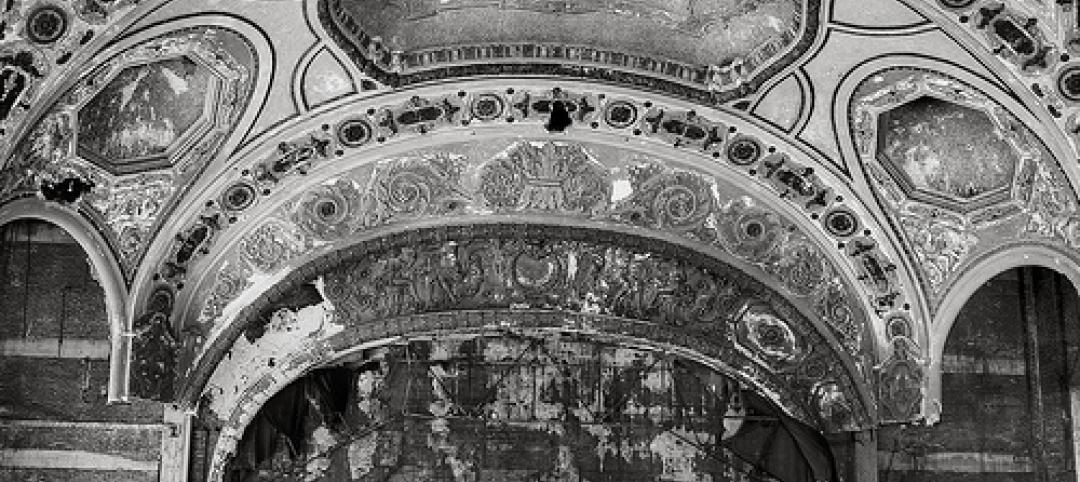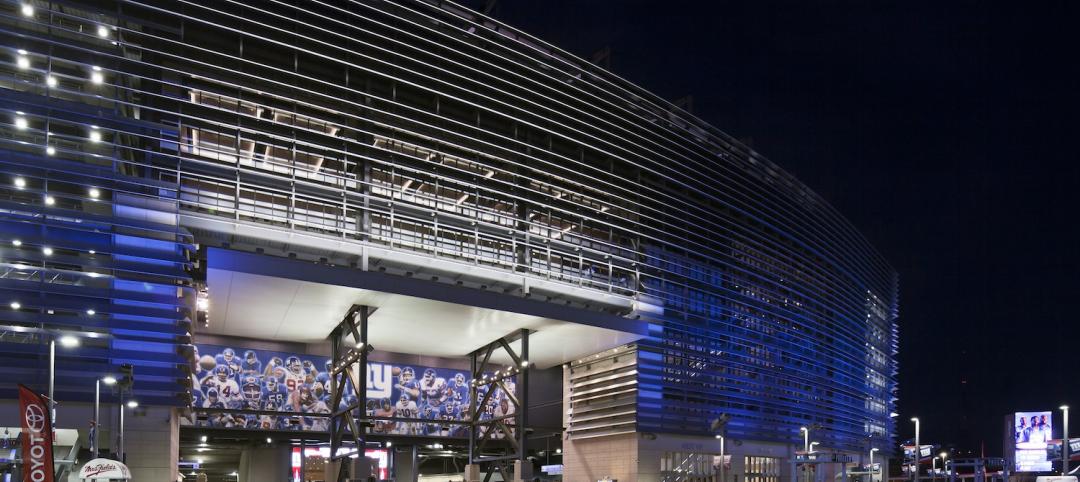Dissatisfied with the one-dimensional nature of defining energy efficiency as it relates to commercial buildings, international engineering firm Buro Happold developed a metric that links energy use to economic performance. The Building Economic Energy Coefficient (BEEC) could help many commercial building owners whose properties use a lot of energy (input), but add economic value to their cities and regions (output). This metric can also be a game changer that influences how local governments create policy to monitor the energy use of buildings.
(Download Buro Happold's white paper on the subject.)
Most systems of measurement deem a building efficient or inefficient based solely on how much energy it consumes. By contrast, BEEC measures a building’s energy use against economic performance indicators to give a more complete picture of a building’s productivity -- hence its overall efficiency. For example, a building might use less energy, but its tenants do not contribute as much to the regional economy. By this definition, another building that uses more energy might have an exponentially greater economic performance, making it more efficient.
When observed from this more comprehensive vantage point, some buildings that were previously thought of as energy hogs are revealed to be using energy more efficiently than many low-energy buildings. Buro Happold used proprietary research from CoStar Group to determine economic performance of commercial buildings in New York.
“Energy efficiency is framed in a very black-and-white way – either a building has low energy intensity or it is considered wasteful. With this research, we can now see whether or not commercial buildings are putting energy to good use. It allows us a much more nuanced and complete picture of what’s really going on with energy use,” said Steven Baumgartner, PE, CEM, HBDP, LEED AP, associate at Buro Happold, who led the research team, along with Jim Coleman and Amelia Aboff of Happold Consulting, Buro Happold’s strategic consulting arm.
City officials, building owners, and members of the AEC industry measure a building’s energy use on a per square foot, per year basis. This is known as its Energy Use Intensity (EUI). EUI is a very useful metric in determining a building’s performance but it only tells half of the story.
“Buro Happold has been a pioneer in sustainability for decades, and now we are intensively involved in the challenges of the 21st century,” said Craig Schwitter, PE, BSCE, MSCE, principal. “We are a multidisciplinary firm that brings a comprehensive approach to problems at multiple scales – from the individual building to the region. This groundbreaking research will have a major impact on the way that energy use is discussed and regulated as we meet the ongoing challenges of an increasingly complex world.”
BEEC data is currently limited to New York City commercial buildings. With more funding, Buro Happold hopes to expand the scope of the research to include more cities, and with greater detail. “This is a huge first step toward redefining energy efficiency,” added Baumgartner, “and we’re excited to take this research to the next level.”
Related Stories
| Aug 21, 2014
Strategies for providing great customer service
Customers are inherently inefficient and inconvenient to do business with, writes Customer Service Consultant Micah Solomon, in a recent Forbes post. That’s why he believes great customer service depends on understanding this. SPONSORED CONTENT
Sponsored | | Aug 21, 2014
Defining the measure of success when implementing new technologies
Sasha Reed and Chad Dorgan, McCarthy Building Cos.’s Vice President of Quality and Sustainability, discuss the keys to managing innovation within a large construction firm. SPONSORED CONTENT
| Aug 21, 2014
RTKL's parent company Arcadis acquires Callison
The acquisition of Callison, known predominantly for its leadership in retail and mixed-use design, builds on Arcadis’ strong global design and architecture position, currently provided by RTKL.
| Aug 21, 2014
Must See: Detroit's Beaux-Arts parking garage
An opulent Renaissance Revival building in downtown Detroit is being used as a parking garage.
| Aug 20, 2014
WELL Building: The next step in green sports construction
The WELL Building Standard, a new protocol that focuses on human wellness within the built environment, is a particularly good fit for sports facilities, write Skanska's Tom Tingle and Beth Heider.
| Aug 20, 2014
Seattle's King Street Station thoughtfully restored [2014 Reconstruction Awards]
After years of neglect and botched renovations, King Street Station sparkles once again.
| Aug 20, 2014
Tour an office with no assigned workstations [slideshow]
The New York office of the Gerson Lehrman Group recently redesigned its office without personal desks or cubicles. The company gave each of its 250 employees a locker, a laptop, and told to work anywhere they wanted, according to Business Insider.
| Aug 20, 2014
Architecture Billings Index reaches highest mark since 2007
The American Institute of Architects reported the July ABI score was 55.8, up noticeably from a mark of 53.5 in June.
| Aug 19, 2014
Goettsch Partners unveils design for mega mixed-use development in Shenzhen [slideshow]
The overall design concept is of a complex of textured buildings that would differentiate from the surrounding blue-glass buildings of Shenzhen.
| Aug 19, 2014
HOK to acquire 360 Architecture
Expected to be finalized by the end of October, the acquisition of 360 Architecture will provide immediate benefits to both firms’ clients worldwide as HOK re-enters the sports and entertainment market.
















